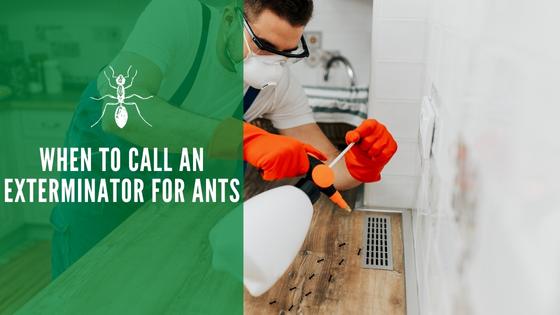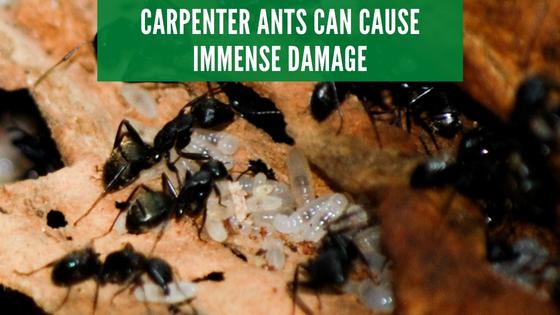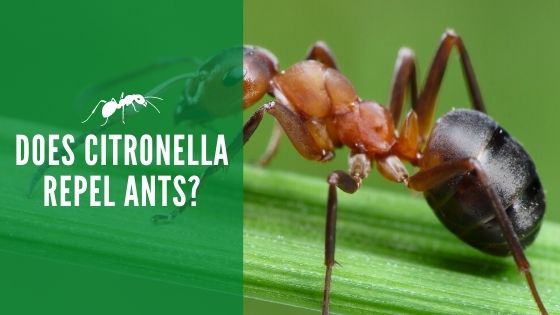When to Call an Exterminator for Ants

Spiders might not be the most feared pest after all. A recent survey found that ants made the top of the list among homeowners’ pest concerns.
Since ants comprise a broad category of species that can do everything from spoil food to destroying wooden structures, it is easy to see why they top other pests as a primary concern. Knowing when you need to call an exterminator helps keep an ant problem from becoming a nightmare.
Signs of an Ant Infestation
Ant infestations can occur outside, where their location can help give away their identity. For instance, pavement ants tend to hang out exactly where you’d expect, which is near concrete driveways and walking paths.
You can find just about any ant inside your home or commercial building. Usually, ants come inside for food, water, and shelter. Since they lack much fear of humans, they’ll often be found marching around areas where they are easy to spot.
Some species, such as carpenter ants, hide in less obvious spaces.
Seeing a Trail of Ants or a Mound
Ants often build their colonies outside, and their mounds can sometimes sit on top of the ground. Depending upon the colony’s size and the type of ants on your property, the mound can have one small entrance hole while, massive colonies can create fairly large mounds with many entrances and exits.
Once they’ve established their colony, ants will march in long trails to and from their food and water sources. You can sometimes even tell where the ants are getting inside by tracing their little trail to a crack in the exterior wall or near a window or door.
Finding Wood Shavings
Carpenter ants hold a special place in the pest control world by doing just as much damage as termites. While most pests are happy just feeding on your family’s food, this ant type goes straight for the heart of your home.
Carpenter ants leave behind wood shavings as they chew through the wooden parts of a building. You’ll often find these bits of wood particles outside their holes, which gives you a good clue about where they live.
Developing Skin Reactions
Ant bites can range from a mild nuisance to a life-threatening reaction. If you aren’t inspecting your yard regularly, then one of your first signs of an ant problem could show up on your skin.
Ant bites often appear on your feet and ankles, where they might crawl up your body while you stand near a trail or mound. Since these bites can often mimic ones from other pests, such as fleas, it might be necessary to have a professional check things out to accurately identify what is causing them.
Spotted signs of an ant infestation? Click here to get in touch with local ant removal experts
Types of Risks Ants Pose to Humans
When an ant shows up at your picnic in the park, you might give it a little leeway. After all, you are the one invading its natural habitat, and it won’t cause much harm to you in the long run.
Once you find them at home, the situation completely changes. Ants can pose several serious risks to you, your family, and your property that require immediate attention.
Allergic Reactions
People sensitive to ant bites may experience severe pain, swelling, and redness in the areas where they are bitten. Fire ants are especially notorious for contributing to severe allergic reactions.
Fire ants will bite people unprovoked, and they can inflict multiple painful bites within seconds. Serious systemic reactions that require hospitalization occur in around 2% of all fire ant bite encounters, and the elderly and infants are most at risk for sustaining bites that lead to death.
Food-Borne Illnesses
If the thought of cockroaches running across your food makes you squirm, you don’t want ants doing it, either. Ants don’t often get blamed for food-borne illnesses since flies and roaches are better known for running across spoiled food.
However, ants can also spread disease. One study found that ants spread E. Coli to food surfaces at around a 70% frequency rate. Now, that could really spoil a picnic or family dinner.
Damage to Building Structures
Ant species that decide to move indoors can ruin a perfectly good building. Like termites, carpenter ants bore pathways throughout the interior structure, which can eventually become serious trouble for the people who inhabit the space.

If carpenter ants create enough damage, you’ll notice that doors and windows are hard to open. In a worst-case scenario, ceilings, walls, or floors can cave in. If someone happens to be near the destruction, they could easily be hurt in the collapse of a portion of the building.
The Best Time to Call an Exterminator
If you spot an errant ant outside, you might not worry too much. But you’ll want to heed this as a warning to keep a close watch for signs that it means something more.
Outside, you’ll want to call an exterminator immediately if you see fire ants or mounds and trails that signal that an extensive colony could lurk nearby.
Indoor infestations always warrant an immediate call to an exterminator. Getting rid of the ants immediately protects your family from painful stings and reduces the risk of property damage if those annoying bugs are carpenter ants.
Ready to get in touch with an ant exterminator? Click here to get started
How Do Exterminators Get Rid of Ants
When you call an exterminator, they’ll rely on their professional expertise to develop a comprehensive plan that may include one or all of the following strategies.
Identify the Type and Location of the Colony
Proper identification of ants is critical for finding the right pest control solution. During an inspection, a pest technician will check out your property’s interior and exterior portions to check for signs of an ant infestation.
During an inspection, it is common to discover several types of ants living in the same space. It is also very possible that the pest technician will discover other insects on your property. Ants, spiders, roaches, and other creepy crawlers often use the same route to invade a house or commercial building.
Use an Appropriate Insecticide
The location and type of infestation drive the pest technician’s decision on how to eliminate the pests. Gel baits are commonly placed along spaces where ants are known to cross. Perimeter spraying is another option that a pest technician may use to address infestations involving multiple bugs.
Seal Off Entry Points and Eliminate Attractants
In some cases, an exterminator can remove a whole colony of ants by removing infested wood from a building. However, they usually treat the colony and then seal off entrances and exits so the ants can’t continue their normal habits.
An exterminator may also talk to you about ways to eliminate bringing ants too close to your home. Keeping pet food, water, and other potential survival sources out of an ant’s reach helps cause them to go elsewhere to meet their needs.




